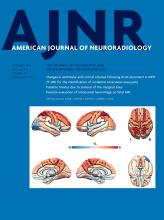It is with much consideration that we have read the article “Distal Transradial Access for Diagnostic Cerebral Angiography and Neurointervention: Systematic Review and Meta-Analysis,” by Hoffman et al.1 We completely agree with the authors’ conclusion that early experience with distal transradial access (dTRA) suggests that it is a safe and effective alternative to proximal transradial access (pTRA) and femoral access for performing diagnostic cerebral angiography and interventions. Meanwhile, the authors reported, in the “Future Directions” section, that the development of catheters specifically designed for transradial neurointervention may improve the efficacy of the approach.1 Transradial access, including pTRA and dTRA, can be technically challenging for a certain population of patients with an unfavorable acute takeoff of the target common carotid artery (CCA), such as those with right CCA lesions with steep angulation to the right subclavian artery, or left CCA lesions of nonbovine origin. In such cases, a conventional straight-shaped guiding system can prolapse into the aortic arch or can cause catheter kinking, resulting in device entrapment/fracture.
We previously reported that first-line transradial access with a 6F preshaped Simmons guiding sheath (0.088-inch inner diameter, 6F Axcelguide STIFF-J, 90 cm; Medikit) provides a high procedural success rate without catheter kinking or system instability for all aortic arch types and target CCAs.2⇓-4 The 6F Simmons guiding sheath is a radial-specific neurointerventional sheathless guiding catheter whose distal end comprises a kink-resistant Simmons curve specially designed for CCA cannulation. The 6F Simmons guiding sheath is introduced into the target CCA by using the “push-in” or “pull-back” cannulation techniques based on the access side, aortic arch type, and target CCA. The push-in technique is a procedure to coaxially advance a 6F Simmons guiding sheath using a push-in maneuver, while the pull-back technique is a procedure to coaxially deliver a 6F Simmons guiding sheath using a pull-back maneuver after the reformation of the natural reversed curve (Simmons curve) within the ascending aorta.2⇓-4 Transradial carotid cannulation with the pull-back techniqueis technically simple and is unique to this radial-specific neurointerventional guiding sheath. We believe that dTRA with the radial-specific 6F Simmons guiding sheath will be a useful option in anterior circulation interventions.
Finally, we would like to congratulate the authors for their interesting review, which improves the transradial neurointerventional approach.
- © 2021 by American Journal of Neuroradiology












